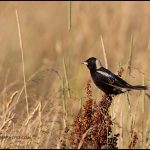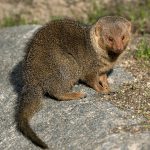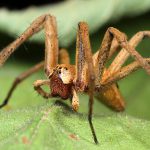This gallery contains 8 photos.
The Bobolink (Dolichonyx oryzivorus)-General Biology APPEARANCE Male bobolinks have large, flat heads, short necks, and short tails. Males are black on the anterior portion of head, wings, and tail. The back, scapulars, lower back, rump, and upper tail-coverts are white/pale … Continue reading







